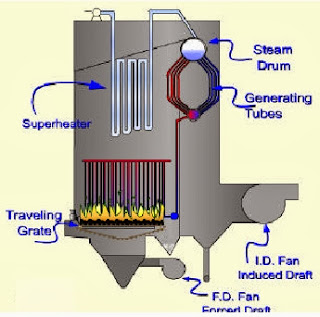The functions of the condenser are to desuperheat the high pressure gas, condense
it and also sub-cool the liquid.
Heat from the hot refrigerant gas is rejected in the condenser to the condensing
medium-air or water. Air and water are chosen because they are naturally
available. Their normal temperature range is satisfactory for condensing
refrigerants.
Like the evaporator, the condenser is also heat exchange equipment
it and also sub-cool the liquid.
Heat from the hot refrigerant gas is rejected in the condenser to the condensing
medium-air or water. Air and water are chosen because they are naturally
available. Their normal temperature range is satisfactory for condensing
refrigerants.
Like the evaporator, the condenser is also heat exchange equipment
Other Topics
IC engine, Method
of Ignition, mechanical
Engineering, English books,Photoshop
tutorials,Harry
potter,Best
100 english books,IC
engine,Metal
Casting,Mechnical
Previous Years Gate Question Papers ,Mechanical-old-question-paper,Milling
Quiz,Forging
Quiz,Cold
Extrusion,Hot
Extrusion,CLutch,Wet Clutch,Introduction
to Flywheel,Flywheel:
FACTOR,
Governors ,Thermal
Power Plant,Pulverizer,Boiler,Fire
Tube Boiler,Water
Tube Boiler,Packaged
Boiler,Superheater,Condenser






